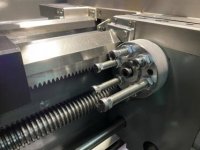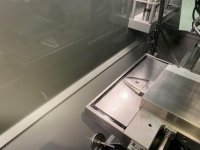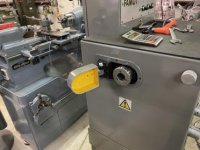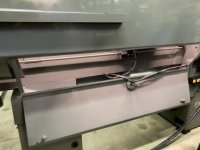tailstock4
Cast Iron
- Joined
- Mar 3, 2013
- Location
- Oklahoma, USA
I'm sharing some pictures of my Toolmex TUM-35D2 lathe and several of the recent modifications I've completed on it. Most recent were the rotary carriage stop, counterweight for the back of the carriage, tailstock quill digital scale, rear spindle cover door, and collet drawer. The counterweight evens out the balance weight-wise of the carriage. I also built the sheet metal modifications of the back splash of which I added the fold down door. It is all original paint except the sheet metal modifications.
I modified a Clausing stead rest to fit this lathe. The last project I have for this machine is to build a follow rest.
Some unique features of this machine include a headstock which is scraped to the v-ways – something that is unusual in a 2004 lathe. The clutch, brake, oil pump and most of the gearing reside in the bottom of the machine’s pedestal thereby reducing heat and vibration in the headstock.
I would be curious to know if anyone else has the D2 version of this machine. I’m considering whether I should add grease to the spindle bearings. Anyone have experience with that?





I modified a Clausing stead rest to fit this lathe. The last project I have for this machine is to build a follow rest.
Some unique features of this machine include a headstock which is scraped to the v-ways – something that is unusual in a 2004 lathe. The clutch, brake, oil pump and most of the gearing reside in the bottom of the machine’s pedestal thereby reducing heat and vibration in the headstock.
I would be curious to know if anyone else has the D2 version of this machine. I’m considering whether I should add grease to the spindle bearings. Anyone have experience with that?
















